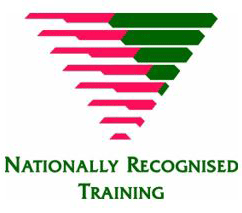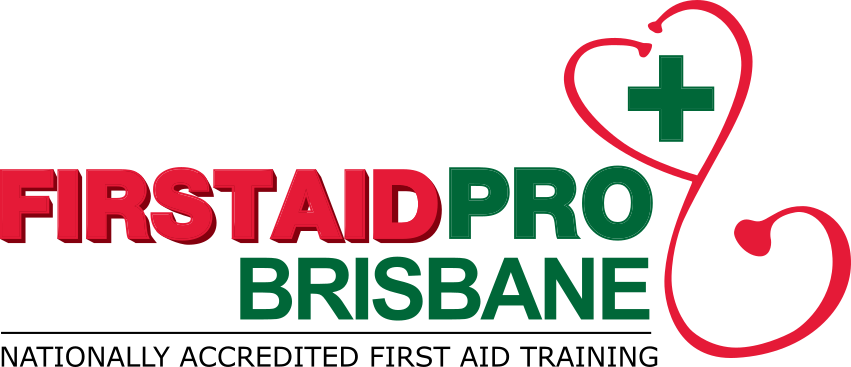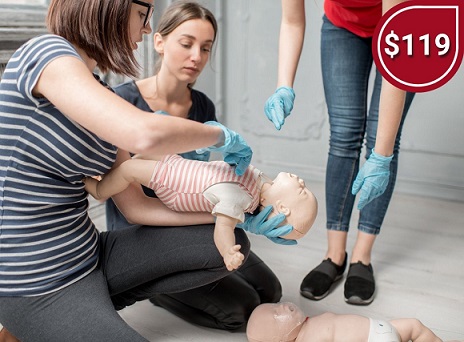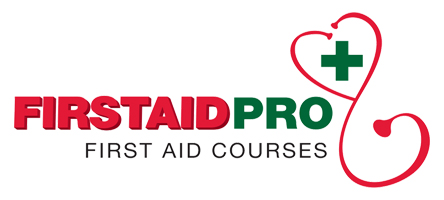Choose your training venue nearest to your location.
Course Name
HLTAID012 – Provide First Aid in an education and care setting (Online)
Course Code Included
- HLTAID012 – Provide First Aid in an education and care setting (new code)
- HLTAID011 – Provide First Aid (included)
- HLTAID010 – Provide basic emergency life support (included)
- HLTAID009 – Provide cardiopulmonary resuscitation (included)
Course Duration
Online Learning + 2 hours in class
Course Cost
From $119 (may vary)
Course Certificate
Issued Same Day (T&C)
Is the course accredited?
Yes
Does the course meet workplace requirements?
Yes
Childcare First Aid

HLTAID012 Provide Childcare First Aid Online
HLTAID012 Childcare First Aid Course (Online) Brisbane
Newest Childcare First Aid Course. Replaces superseded HTLAID004 Provide an Emergency First Aid Response in an Education and Care Setting
Brisbane First Aid’s HLTAID012 Provide First Aid in an education and care setting (including CPR) Learning Online course is the quickest and most straightforward way to get your qualification.
Save time and effort by completing a portion of the course online on your schedule. Don’t waste your time sitting through long lectures or presentations covering information you have learnt before, are already familiar with or could learn yourself.
If you prefer, a Face-to-Face version of this course with extra trainer support is also available.
We are a highly regarded registered training organisation (RTO: 40407) that runs regular accredited first aid courses throughout Brisbane.
HLTAID012 Provide First Aid in an education and care setting is the latest childcare first aid accreditation and is our most sought-after course among childcare and education workers. It includes all the skills and knowledge required to provide a first aid response to infants, children and adults in line with The Australian Resuscitation Council (ARC), Safe Work Australia, Australian Society of Clinical Immunology and Allergy (ASCIA) and other national peak clinical body guidelines.
Provide First Aid in an education and care setting also satisfies most First Aid occupational licensing law requirements. It may contribute towards approved first aid, asthma and anaphylaxis training under the Education and Care Services National Law and the Education and Care Services National Regulations (2011).
This unit is approved by the Australian Children’s Education and Care Quality Authority (ACECQA).
The ARC recommends learners complete this course every three years to maintain First Aid validity and currency of knowledge and skill.
Why Choose Our HLTAID012 First Aid Course?
- Find a Cheaper Price, We'll Price Match
- First Aid Training with Flexible options
- Same-Day Certificate
- Accredited Certification, Nationally Recognised
- Workplace Training at your site
- Courses available 7 Days
- Royal Australian College of General Practitioners – endorsed
- Australian College of Nursing – endorsed
- Book Online or by Phone
Many Chilldcare First Aid Course Locations in Brisbane




HLTAID004 Provide First Aid is now HLTAID012
New Industry Standard
HLTAID012 Provide Childcare First Aid is the new industry standard for first aid training. It’s made up of these refreshed units of competency:
- HLTAID009 Provide cardiopulmonary resuscitation (Old Course Code: HLTAID001)
- HLTAID010 Provide basic emergency life support (Old Course Code: HLTAID002)
- HLTAID011 Provide First Aid (Old Course Code: HLTAID003)
- HLTAID012 Provide First Aid in an education and care setting (Old Course Code: HLTAID004)
Faster Childcare First Aid Qualification
Brisbane First Aid’s Learning Online course is the most efficient Childcare First Aid in Brisbane.
Upon enrolment, students gain instant access to a secure and user-friendly student portal. This portal contains all the learning and assessment materials needed to complete the knowledge portion of the course online and in their time.
Once the online portion is complete, there’s a 2-hour in-class practical session for all practical requirements of the course to be completed under the supervision of an industry-leading first aid trainer.
2-hour in class practical session
Practical training and assessment for this course are completed in a single-day 2-hour session starting at 9:00 am and finishing at 11:00 am and includes:
- A detailed and comprehensive trainer-led demonstration on how to use first aid equipment and perform all required first aid techniques and skills (see performance evidence below)
- Trainer led practice and question time on all required knowledge and performance evidence, including the use of first aid equipment.
- Practical assessment of performance evidence in the form of role plays, observations, written and verbal incident/review reports and class debriefs
*To attend the practical session, you must first complete the knowledge requirements online. The number of study hours needed to complete the knowledge tasks varies depending on your existing knowledge, skills and experience.
First Aid Certificate Issue – Same Day
Successful completion of all the knowledge and performance evidence and criteria of Brisbane First Aid’s HLTAID012 Provide First Aid in an Education and Care Setting course to a satisfactory level will result in the awarding of the following nationally recognised units of competency:
- HLTAID009 – Provide Cardiopulmonary Resuscitation (CPR)
- HLTAID010 – Provide Basic Emergency Life Support
- HLTAID011 – Provide First Aid
- HLTAID012 – Provide First Aid in an education and care setting
Australian Resuscitation Council (ARC) Guidelines recommend HLTAID011 Provide First Aid be updated every three years and HLTAID009 Provide Cardiopulmonary Resuscitation (CPR) be updated every 12 months to remain valid.


Provide Childcare First Aid Course (Online) Venues in Brisbane
Brisbane First Aid Learning HLTAID012 Provide Childcare First Aid courses run 7 days a week, 50 weeks a year, right across the Brisbane CBD and surrounding suburbs. Suburbs serviced include:
Course Requirements
In line with industry and organisational obligations, Brisbane First Aid Courses can only accept and issue nationally accredited units of competency to learners who are:
- At least 14 years of age (those who are under 18 must present a signed Parent or Guardian Consent Form)
Learners should also physically be capable of completing the performance requirements of this unit. At a minimum, learners will need to be physically capable of:
- Perform at least 2 minutes of uninterrupted single rescuer cardiopulmonary resuscitation (CPR) (5 cycles of both compressions and ventilations) on an adult manikin placed on the floor
- Perform at least 2 minutes of uninterrupted single rescuer cardiopulmonary resuscitation (CPR) (5 cycles of both compressions and ventilations) on an infant resuscitation manikin placed on a firm surface
- Operate an automated external defibrillator (AED) to deliver at least one shock
- Provide first aid assistance for many conditions including anaphylaxis, asthma, non-life-threatening, choking, envenomation, fractures, dislocations, sprains, strains, minor wounds, nosebleed, shock
USI requirements
A USI (unique student identifier) number is a mandatory requirement for any student wishing to undertake vocational training. A USI number is unique to you and provided by the government to keep a secure online record of your VET certifications. You can look up your number or register for a USI number quickly and easily by clicking on the following link: https://www.usi.gov.au/students/create-usi.
Throughout this course you will be assessed on:
Your understanding of:
(Knowledge / theory)
- Australian Resuscitation Council Guidelines
- Australian Society of Clinical Immunology and Allergy Action Plans
- Safe Work Australia Code of Practice
- Incident hazard and risk minimisation processes
- Infection control procedures
- Workplace or site first aid procedures
- First aid kit contents
- Education and Care Services National Law
- State Education and Care Services Regulations
- First aider Duty of Care requirements
- First aider requirements for currency of skill and knowledge
- First aider skill and knowledge limitations
- First aid parent / guardian consent
- First aid privacy and confidentiality requirements
- Stress management techniques and available support for rescuers and children
- The effect of positional change during CPR
- The appropriate duration, hand placement, compression / ventilation cycles and cessation of CPR
- AED use on children
- AED safety and maintenance procedures
- Chain of survival
- Accessing and handing over to emergency services
- Assessing the level of consciousness for infants and children
- Basic anatomical differences and first aid considerations between infants, children and adults
- Identification of signs and symptoms and childcare first aid management for allergic reaction
- Identification of signs and symptoms and childcare first aid management for anaphylaxis
- Identification of signs and symptoms and childcare first aid management for asthma
- Identification of signs and symptoms and childcare first aid management for non-life-threatening bleeding
- Identification of signs and symptoms and childcare first aid management for breathing difficulties
- Identification of signs and symptoms and childcare first aid management for burns
- Identification of signs and symptoms and childcare first aid management for choking
- Identification of signs and symptoms and childcare first aid management for diabetes
- Identification of signs and symptoms and childcare first aid management for drowning
- Identification of signs and symptoms and childcare first aid management for envenomation
- Identification of signs and symptoms and childcare first aid management for eye injuries
- Identification of signs and symptoms and childcare first aid management for febrile convulsions
- Identification of signs and symptoms and childcare first aid management for fever
- Identification of signs and symptoms and childcare first aid management for fractures
- Identification of signs and symptoms and childcare first aid management for dislocations
- Identification of signs and symptoms and childcare first aid management for sprains
- Identification of signs and symptoms and childcare first aid management for strains
- Identification of signs and symptoms and childcare first aid management for head injuries
- Identification of signs and symptoms and childcare first aid management for neck injuries
- Identification of signs and symptoms and childcare first aid management for spinal injuries
- Identification of signs and symptoms and childcare first aid management for hypothermia
- Identification of signs and symptoms and childcare first aid management for hyperthermia
- Identification of signs and symptoms and childcare first aid management for minor wounds
- Identification of signs and symptoms and childcare first aid management for pain
- Identification of signs and symptoms and childcare first aid management for shock
- Identification of signs and symptoms and childcare first aid management for nose-bleed
- Identification of signs and symptoms and childcare first aid management for poisoning
- Identification of signs and symptoms and childcare first aid management for seizures
- Identification of signs and symptoms and childcare first aid management for vomiting
- Identification of signs and symptoms and childcare first aid management for diarrhoea
- Identification of signs and symptoms and childcare first aid management for a sick infant or child
- Childcare first aid emergency action plans for asthma
- Childcare first aid emergency action plans for anaphylaxis
- Childcare first aid emergency action plans for seizure / epilepsy
Your ability to provide effective first aid to:
(Practical /skills)
- An unconscious, non-breathing adult and child (CPR, AED)
- A regurgitating or vomiting unconscious adult and child (recovery position)
- An unconscious, non-breathing infant (CPR)
- An unconscious, breathing infant (open airway)
- A child with anaphylaxis (ASCIA Emergency Action Plan, Epipen)
- A child with asthma (ASCIA Emergency Action Plan, inhaler, spacer device)
- A child with non-life-threatening bleeding (bandage dressing)
- A child in shock (reassuring them, monitoring body temperature)
- A child who is choking (back blows, chest thrusts)
- A child who has been bitten by a snake (Pressure Immobilisation Technique)
- A child with a fractured arm (bandage, sling)
- A child with a dislocated shoulder (cold compress)
- A child with a sprained ankle (RICER)
- A child with a nosebleed (apply pressure, lean forward)
You will also be assessed on your ability to:
- Identify when to provide first aid
- Follow DRSABCD protocol
- Complete incident reports
- Handover to emergency services
DRSABCD protocol
Our accredited First Aid Training teaches you about the DRSABCD protocol. It’s a way of responding to medical emergencies that you can memorise. You think of DRSABCD as Drs Abcd. The letters stand for Danger, Response, Send, Airway, Breathing, CPR and Defibrillator. These represent the steps you follow in an emergency. The first thing to do is check for danger. Then you see if the casualty responds. Next, you send for emergency services. After that, you make sure the airways are clear. Then check that they are breathing and start CPR if necessary. The last thing you do is use the defibrillator.
As well as this, you practise CPR by kneeling on the floor and pushing on a manikin. We teach you according to Australian Resuscitation Council (ARC) guidelines. Managing asthma is another important part of the course, along with knowing how to use an EpiPen in case of anaphylaxis, you will be equipped to effectively respond to the most common emergencies. Such critical skills and knowledge are essential for aged care workers, healthcare professionals and nurses. But anyone benefits from this first aid training because emergencies happen anywhere. In summary, this course prepares you with the skills and knowledge required to respond effectively in a medical emergency.
Eight New First Aid Units of Competency Released
- HLTAID009 Provide cardiopulmonary resuscitation – sometimes referred to as CPR (supersedes HLTAID001 Provide cardiopulmonary resuscitation)
- HLTAID010 Provide basic emergency life support – sometimes referred to as BELS (supersedes HLTAID002 Provide basic emergency life support)
- HLTAID011 Provide First Aid – sometimes referred to as First Aid (supersedes HLTAID003 Provide first aid)
- HLTAID012 Provide First Aid in an education and care setting – sometimes called Childcare first aid (supersedes HLTAID004 Provide an emergency first aid response in an education and care setting)
- HLTAID013 Provide First Aid in a remote or isolated site (supersedes HLTAID005 Remote first aid)
- HLTAID014 Provide Advanced First Aid (supersedes HLTAID006)
- HLTAID015 Provide advanced resuscitation and oxygen therapy (supersedes HLTAID007)
- HLTAID016* Manage first aid services and resources (supersedes HLTAID008)
*Please note Brisbane First Aid does not currently offer this unit
Course Calendar for Provide Childcare First Aid Course (Online) in Brisbane
|
|||||||||||||||



